What is Living the Anabolic Lifestyle Cookbook All About?
Living The Anabolic Lifestyle Cookbook was designed to showcase the skills I’ve acquired as a Communications major while also giving the public a deliverable project that will positively impact their life. I’ve dedicated over six years of my life to weight training and nutrition and I’ve gained a lot of experience and knowledge that I wanted to share with others. Mainly, I wanted to target the clients I will be training at Lifetime Fitness post graduation who most likely will be high schoolers.
The one thing I want to make clear about this project is that I am in no way an expert in nutrition. This project is intended for artistic and entertainment purposes only. I do have my NASM Personal Training Certification, and am qualified to train people in the gym, but in the end, my degree is in Communications. So, I needed to create a project that encapsulated my interest in fitness and nutrition while also showcasing the things that I learned here at SJU. This is essentially a photography project disguised as a cookbook.
If I were to simply take some photos of me in the gym to show off my photography skills, the project would be boring and no one would benefit from it. By creating a cookbook with foods that are fun and healthy, I’m adding substance to the project and actually making a positive impact. The foods I make are pretty unconventional and don’t appear to be healthy, but I show the audience that you can make dieting fun and easy if you make the proper substitutions and think a bit more creatively.
What Experience Do I Have That Affords Me to Create This Project?
I took a Digital Photography course last semester and really enjoyed this Communications Adjacent course. I have a background in Adobe Lightroom and a minor background in Photoshop. The class gave me an eye for creating a quality photo and I wanted to expand upon my interest in self portraiture with this project. Below are some examples of photographs I took in my Digital Photography class.
My Main Challenges
The biggest challenge I faced during this project was both time and design. I had so many ideas going into this project, but as I went about the process, I learned that I bit off more than I could chew, and had to dial down the amount of content that was going to be in the cookbook. The design aspect also threw me for a loop because I have no experience with programs like InDesign or Illustrator that can make sophisticated graphic design. My alternative to this was to use Canva but in a way that didn’t look as “cookie cutter” like most of their templates.
What Kind of Prep Work and Research Went Into the Cookbook?
Gym Permissions
I took my self portraits at PWRBLD Gym in King of Prussia. This is an independent gym that allows the use of cameras and members have to consent to others using cameras while in the facility. It’s a gym that’s vastly different from a standard commercial gym and I was able to take all my bodybuilding photographs there.
Research Gear
I borrowed a Sony A6400 from the Communications department and had to look up several tutorials about the basic functions of this camera. I also purchased a ring light to enhance the quality of my food portraits. Funding for this was provided by the university after I filled out a form and sent over a receipt.
Sample Photos
I had to take dozens of posing shots in the gym just to get one shot that I thought was perfect. This was definitely a challenge for me especially since I did this all on my own. For the photos that didn’t work, I was out of focus, the ISO might have been off, or I didn’t strike the pose in the way I wanted.
Bio
I have a lot more content in the cookbook than a simple “About Me” biography. This concerned my professor, Bill, and he asked if my audience would actually read through everything I wrote. I asked around with my friends in the gym and said, “if you were a teenager, would you read all this information?” and everyone said that they wish they had a guide such as the one I wrote that explained nutritional concepts when they were first starting out. I feel like I had to explain in great detail the method behind the “Anabolic Diet” and why exactly it works. If I didn’t provide proper context, my food recommendations wouldn’t have made much sense.

Screenshot of “The ABC’s of Nutrition” on a draft Google Doc.

Screenshot of “Calculating a Calorie Deficit” in a draft Google Doc.
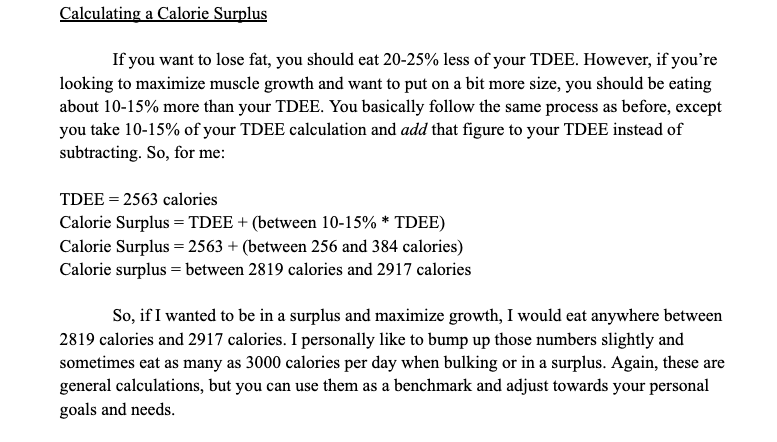
Screenshot of “Calculating a Calorie Surplus” in a draft Google Doc.
Design Persona
I made a design persona in the beginning of the semester that I didn’t like at all. Then, once things started to come together, I rethought my design persona and came up with one that I genuinely liked.
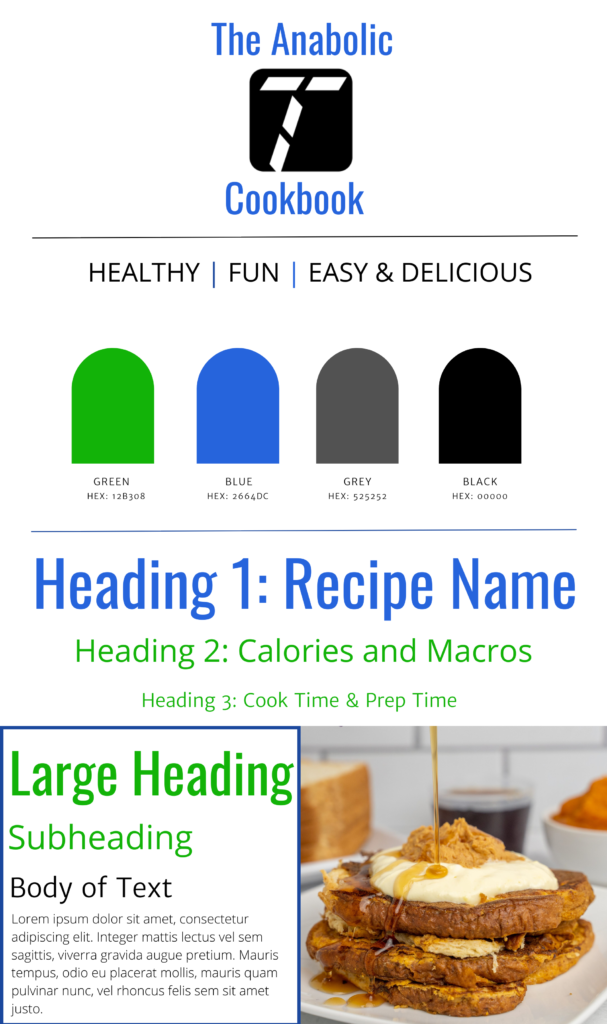
Old Design Persona that doesn’t work.
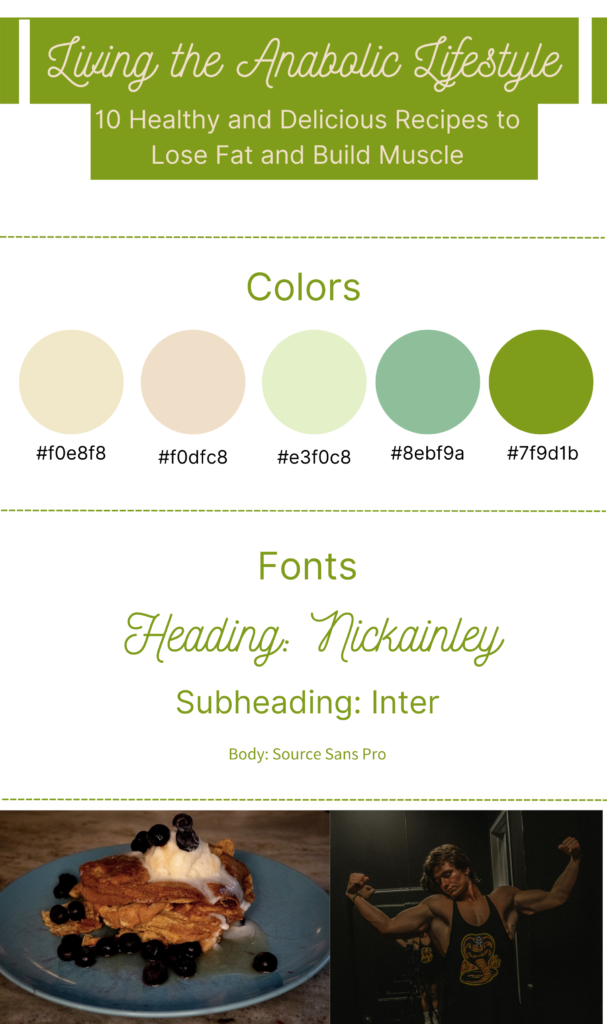
New Design Persona with full cookbook title that works.
Recipes
I had to narrow it down to 10 recipes as opposed to 20 due to time constraints. While I cook these recipes all the time, it was hard to find the time to actually photograph the recipes because prepping the food and making it look pretty for the camera is a chore in itself. Setting the camera up and playing around with the tripod and all the settings was also a big task and was a challenge for me as well.

Screenshot of recipe for “Anabolic Boston Creme Donuts” in a draft Google Doc.
Narrative/Review
At the end of each recipe, I go over my thoughts about the meal and any modifications that can be made to the dish to fit the person’s fitness goals.

Screenshot of a recipe review in a draft Google Doc.
Things I Had to Consider for the Cookbook
Ethics
The main ethical issue was trying to find a gym that would allow me to take photographs. Most commercial gyms have policies against photography and videography so I knew I couldn’t create this project at a gym like Lifetime. This is what led me to PWRBLD because they allow cameras to be used and in fact encourage it because they know people are going to post their photos and videos to social media, which is free marketing for the gym.
Diversity and Inclusion
I tried to pick foods that were appealing to the masses and that a lot of people would enjoy. Common foods such as cheeseburgers, mac n cheese, fried rice, and donuts are all foods that are appealing to the masses, but with a high protein and low calorie twist to them. The groceries for these recipes are also very accessible. I purchased all of the groceries for the recipes at Aldi and Shoprite, two very affordable grocery stores.
Inclusive Design
In addition, I used the Optical Character Recognition provided by Adobe Acrobat to accommodate people who may have vision problems or if a person is trying to follow the cookbook but has their hands full in the kitchen. This feature allows scanned documents, such as a PDF, to scan the text in the document so that a speech to text function can be embedded into the document. Basically, it transforms the PDF from an image-type format to something where text can be recognized.
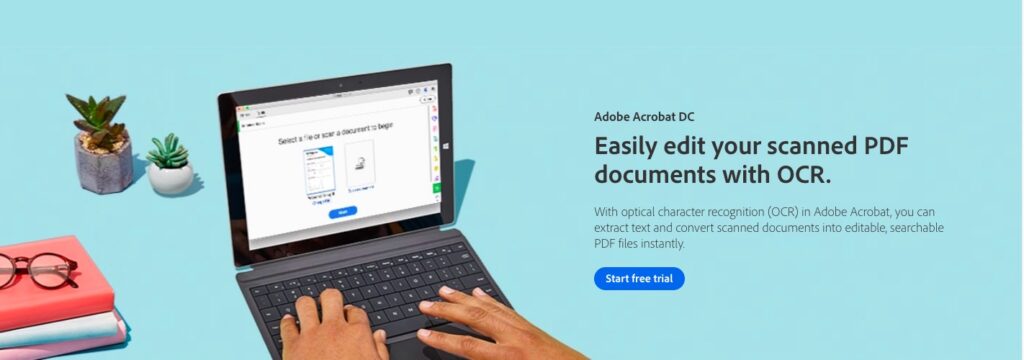
Optical Character Recognition: Adobe Acrobat
What Was the Process of Creating the Cookbook?
Writing Copy
Before I got started with designing the book, I had to write down the written portion of the cookbook. This meant explaining basic nutritional concepts, a bio, writing down each recipe, and my explanation of that recipe.
Self Portraits
Throughout the semester, I took self portraits in the gym after a workout if I had the time to do so. This was a challenge because it took up a lot of time and I don’t always workout at PWRBLD. It takes a half hour to get there, an hour and a half for me to workout and get a good pump for the camera, about forty five minutes to an hour of shooting, and then another half hour drive back. I essentially had to block out three to four hours out of my day to get this part done.
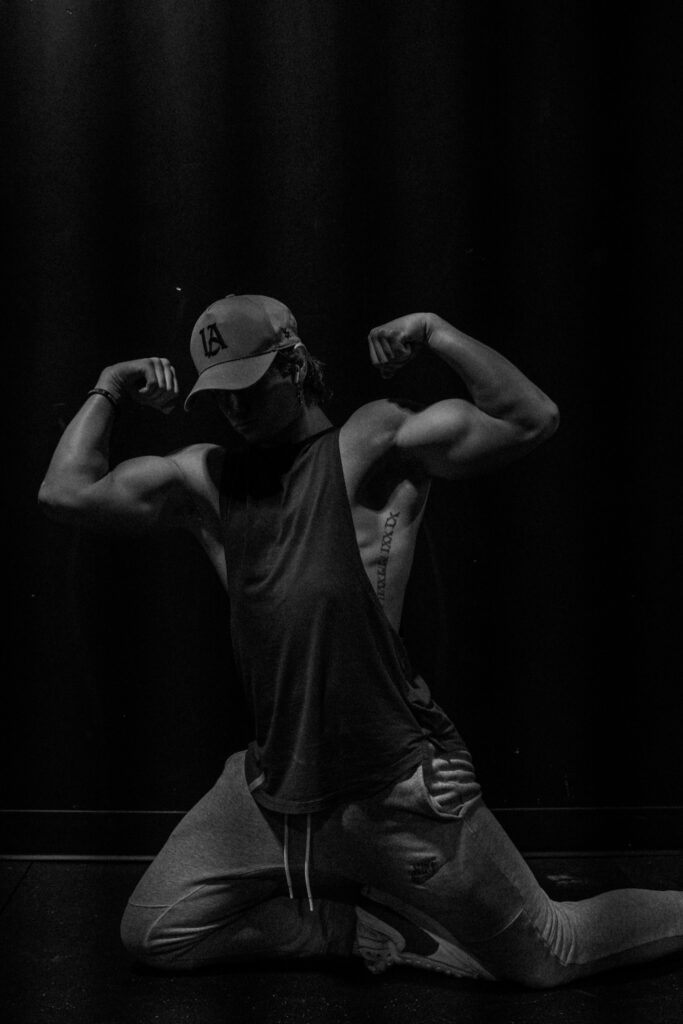
Final self-portrait photograph. The pose is called “Icarus.”
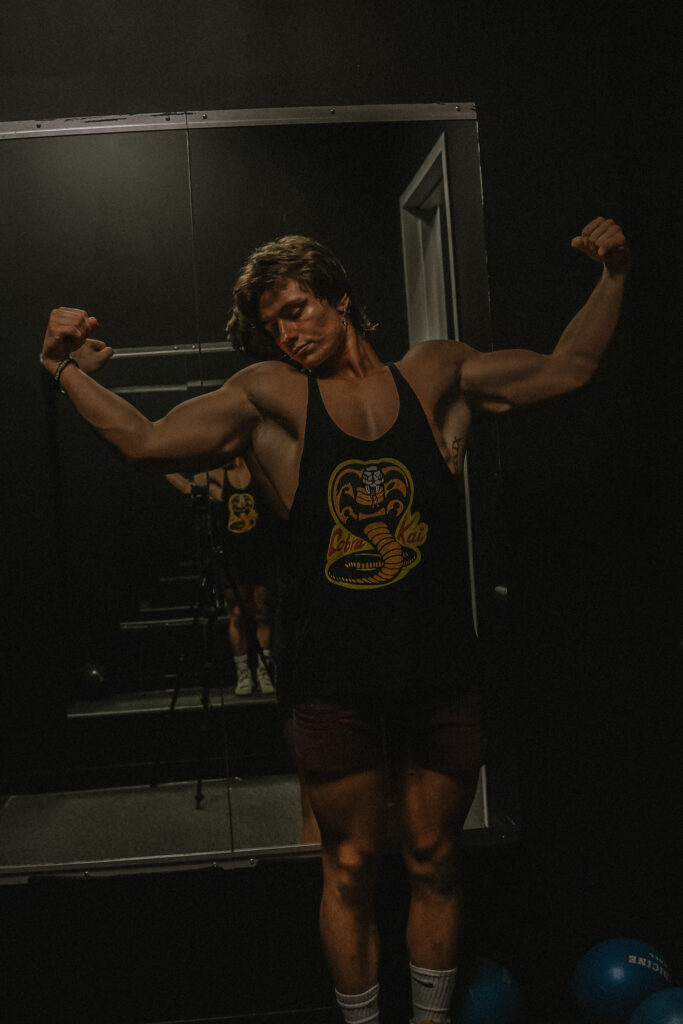
Final self=portrait photograph. The pose is called “Crucifix.”

Final self-portrait photograph. The pose is called “Back Lat Spread.”
Cooking/Food Portraits
Once I found time to cook the recipes and take photos, i set my camera up on the tripod with the ring light and took about twenty photos per meal to get one perfect shot. I then edited the photos in Lightroom.

Final food portrait of “Anabolic Boston Creme Donuts.”
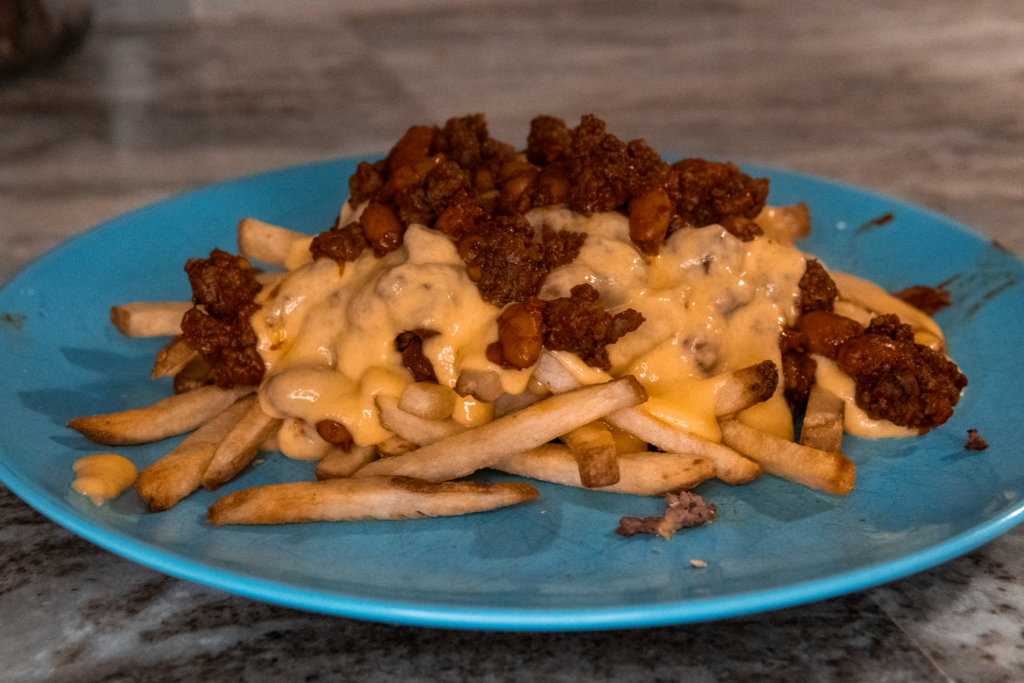
Final food portrait of “Anabolic Chili Cheese Fries”
What are the Tangible Deliverables I Need to Present?
1 Cookbook in ebook Format
Making it an ebook would appeal to my audience and make it more accessible than a print book.
10-12 Recipes
I needed 10-12 recipes within the cookbook.
Postcard
A promotional flier or postcard that describes the cookbook and what it’s all about.
3-5 “Bite Sized” Instagram Posts
Instagram posts that are meant to promote the cookbook. These posts show the food and the recipe and are meant to entice the viewer to go access the cookbook.
What I’d Do Differently
If I could go back in time, I would have managed my time more wisely. I thought I could achieve all my deliverables in a short amount of time, but that really wasn’t the case and I ended up cramming a lot towards the end. If I had managed my time better, the project would have been a lot more polished. One semester seems like a lot of time, but it’s really not when taking all the prep work and side assignments like blog posts into consideration.
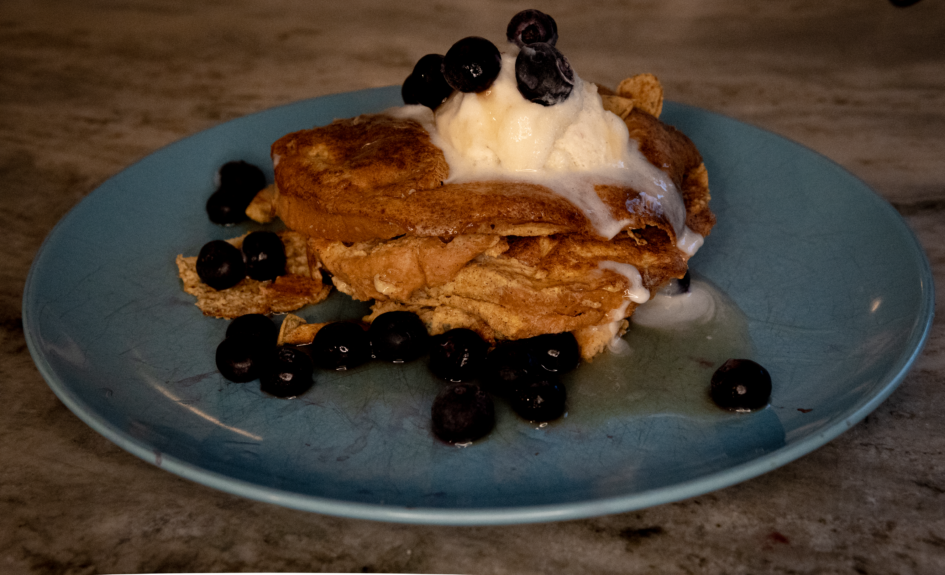
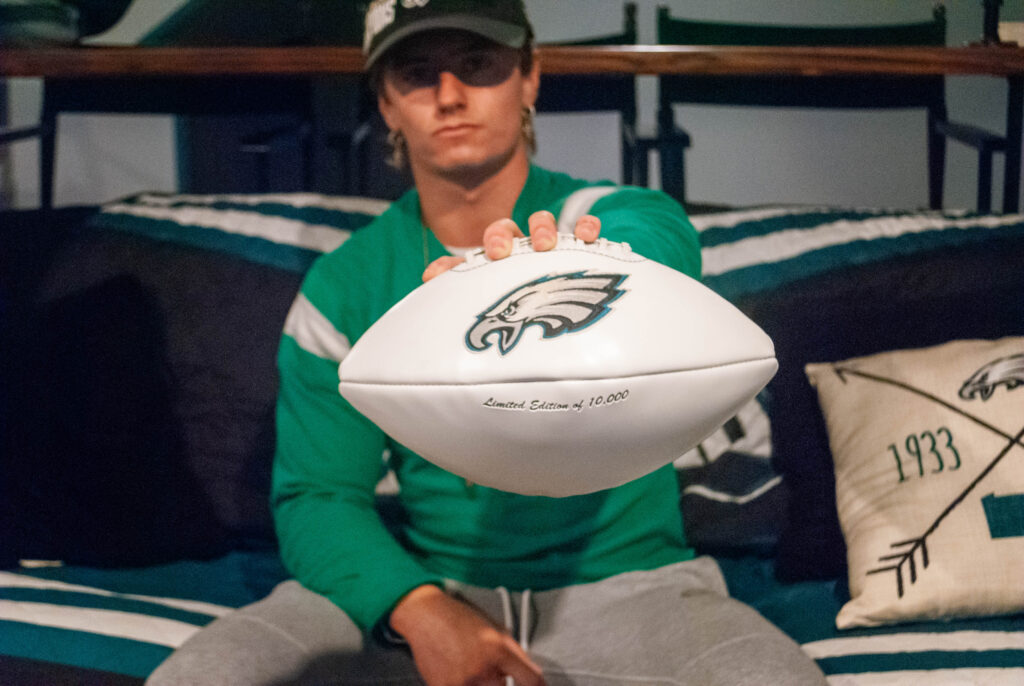


Leave a Reply